Georgian Court University - [Part 2: The George Jay Gould Fountain of Apollo]
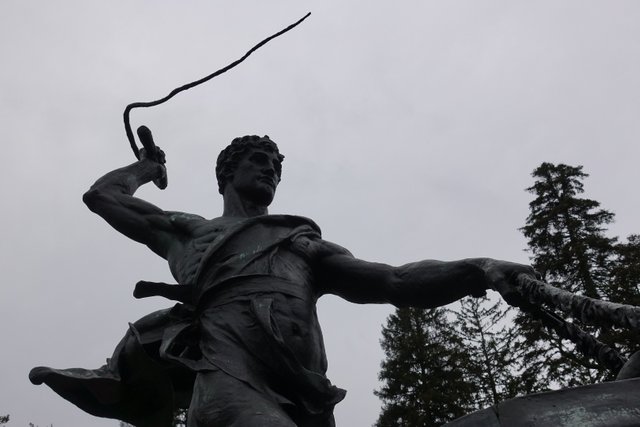
With temperatures in Central New Jersey in the upper 50s Fahrenheit today, yesterday's snow has all but vanished. I decided to return to Georgian Court University this morning to take another round of photographs. I didn't realize how much there was to see, given the relatively small size of the campus.
In part 2 of this series I'd like to share with you a group of images of the George Jay Gould Fountain of Apollo in the Italian Garden at Georgian Court University.
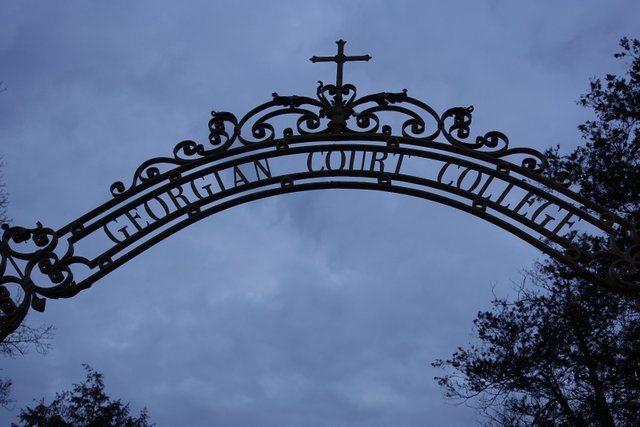
In 1989, the entirety of the 150+ acre campus was dedicated as the Sister Mary Grace Burns Arboretum. She was a former professor of biology at Georgian Court.
The arboretum is sectioned into the following gardens, of which the Italian Garden features the Fountain of Apollo sculpture:
- Formal Garden
- Founders' Grove
- Italian Garden
- Japanese Garden
- Sunken Garden
According to the above Wikipedia link about these gardens:
In 1896, architect Bruce Price was hired to transform the land into the replica of a Georgian country house. Since the sandy soils of the New Jersey Pine Barrens were not suitable for cultivating exotic plants, 5,000 cartloads of fine loam were brought to Georgian Court from neighboring Monmouth County. Bruce Price designed three of the four major gardens: the Italian Garden, the Sunken Garden, and the Formal Garden.
Here are a few non-fountain images taken today in the Italian Garden. As you can see, today was a rather dark, overcast, and gloomy day:
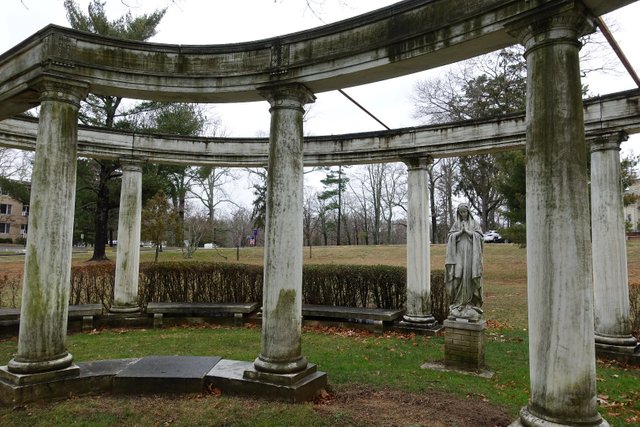
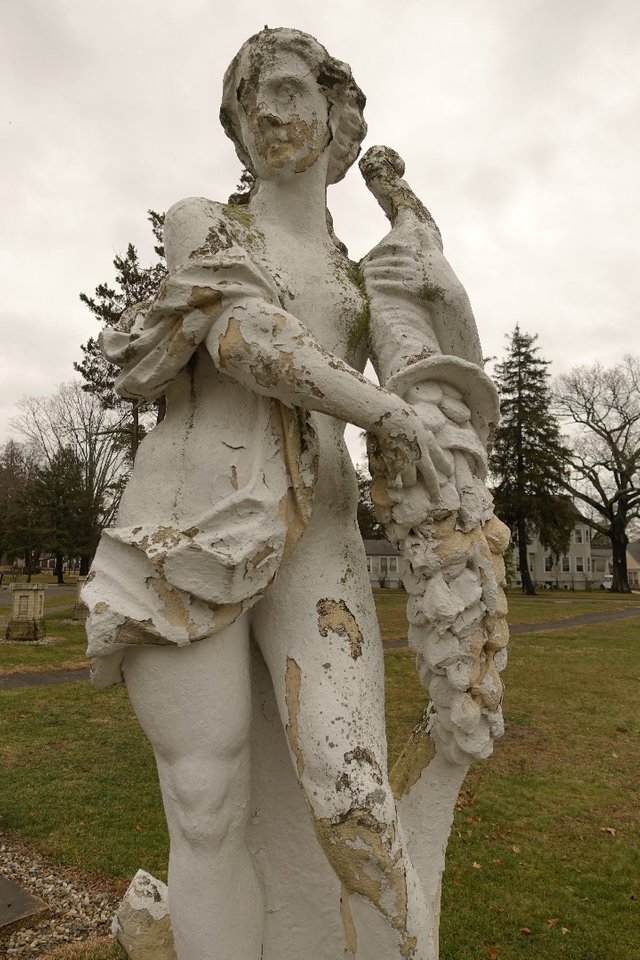
Googling led me to discover that the Fountain of Apollo is listed in the Smithsonian American Art Museum's database of the Inventory of American Sculpture.
Here is the Fountain of Apollo description from the above Smithsonian website:
Full-length bronze figure of Apollo driving a chariot. He wears a cape which flies out behind him. In his proper right hand he holds a whip, which he holds high above his head. He holds the horses' reins in his proper left hand. The bronze chariot is pulled by two white marble horses. The horses are being reined in; only the front of their torsos is visible. Each horse has its proper left foreleg extended and its proper right foreleg bent. Holding onto each side of the chariot are mermaids. They hold conch shells to their mouths, as if sounding a horn. Placed between the horses in front are two small marble cherubs. The cherub on the proper left is holding a large fish. The fish's mouth is wide open. The cherub on the proper right holds its proper right hand to its mouth. Its proper left hand rests on the fish. The sculpture stands in the center of a marble-rimmed concrete fountain basin. Water sprays from the horses' nostrils, the conch shells held by the mermaids, and the mouths of the fish held by the cherubs. In a circular arrangement between the sculpture and the rim of the basin, eight cylindrical forms spray water nearly twenty-five feet into the air.
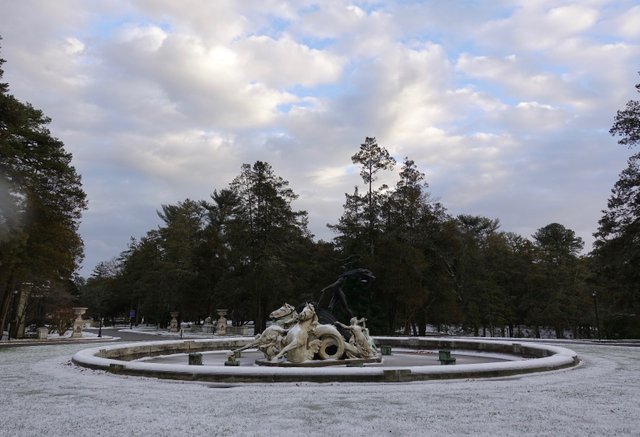
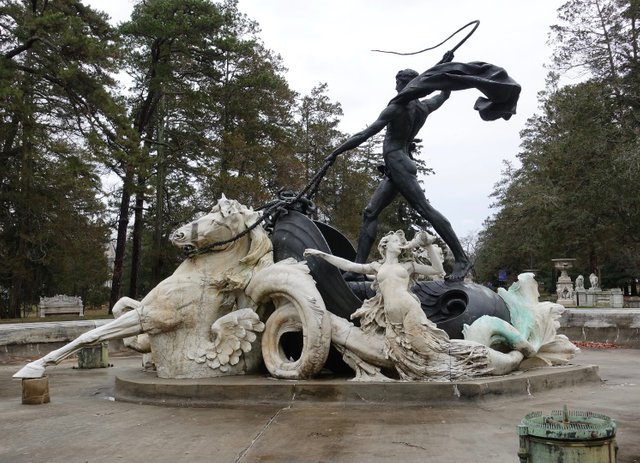
| Name | Value |
|---|---|
| Artist/Sculptor | Rhind, John Massey, 1860-1936 |
| Carver | Faitini, Pietro |
| Founder (bronze castings) | John Williams, Inc (New York) |
| Contractor of fountain pump mechanism | H. & R. Roots Company (Indianapolis) |
| Title | Fountain of Apollo, (sculpture) |
| Date Commisioned | 1900 |
| Date Dedicated | 1902 |
Here are some additional remarks from the Smithsonian website:
The sculpture and fountain were commissioned by George Gould as a birthday gift for his wife. Rhind designed the fountain after figural motifs at Versailles. Faitini carved the sculpture in Italy. The bronze figures were cast by John Williams, Inc. in New York. The fountain pump mechanism was manufactured by H. & R. Roots Company in Indianapolis. The Gould estate was purchased by Georgian Court College in 1924. The fountain operates twice a year.

I was also able to locate a July 1st, 1903 newspaper article online from page 4 of The Allentown Democrat from Allentown, Pennsylvania which shared details of the Fountain of Apollo and which appears to be quoting the textual description from the The Architectural Record, Volume XIII. January 1903. No. 1 which was a periodical published by The Architectural Record Company (14 and 16 Vesey Street New York City). As you can see by the article's description, it was probably a big deal and a flagship feature, back at the turn of the 20th century, that this fountain had water jets and electric lighting.
The Gould Fountain at Georgian Court.
In Georgian Court, the Lakewood country place of George J. Gould, a marsh about fifty yards wide fronting the lake and very near the house has been transformed into a sunken garden of Egyptian type.
The main feature of the garden is an electric fountain. The basin and exterior wall of this fountain are of white marble, and it is sixty feet in diameter. The centerpiece consists of a colossal nautilus shell of bronze, forming a chariot, on which the statue of a heroic man stands, also in bronze, driving a pair of purest white marble sea horses.
Around the horses and chariot are playing sea nymphs and sprites, also in pure white marble. On the extreme front of this nautilus shell is modeled an octopus, and in the top of this is set a sheet of glass. The inner and outer walls of this shell at this point are sufficiently wide to allow for the electrical attachment and lamps, which when lighted with the different colored electric lights throw the colors through the spray of the many small jets shooting up in a circle around this circular light of glass in the octopus.
The statue weighs two thousand pounds, and the bronze boat or shell weighs about three thousand pounds. The height of the statue itself is ten feet. Mr. J Massey Rhind was the sculptor. The beauty of the foundation is greatly enhanced by the surrounding garden, backed as it is by the green foliage and terraces, fronted by the lake, and surrounded by curving stairways of marble leading from one terrace to the other and by the brick esplanades faced and trimmed with marble.
Here's an image of an old postcard showing the fountain in action. Notice that, for some reason, they referred to it as the Neptune Fountain. Hey, Neptune, Apollo -- What difference at this point does it make? 😏
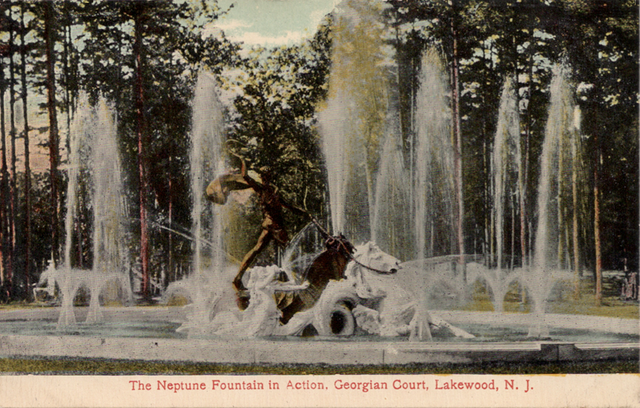
I hope you enjoy these photos and that they give you a good sense of the grandeur of this Fountain of Apollo sculpture. As a side-note, for the close-up photos I took this afternoon (sans snow), I actually climbed down into the fountain. I didn't dare attempt it in yesterday's slushy and icy conditions. Enjoy!!!
Related Steemit posts:
Additional Information:
- Georgian Court University Arboretum
- Smithsonian American Art Museum's database of the Inventory of American Sculpture
- George Jay Gould
- Weird NJ: Old School Ghouls of Georgian Court University
- Georgian Court Campus Map
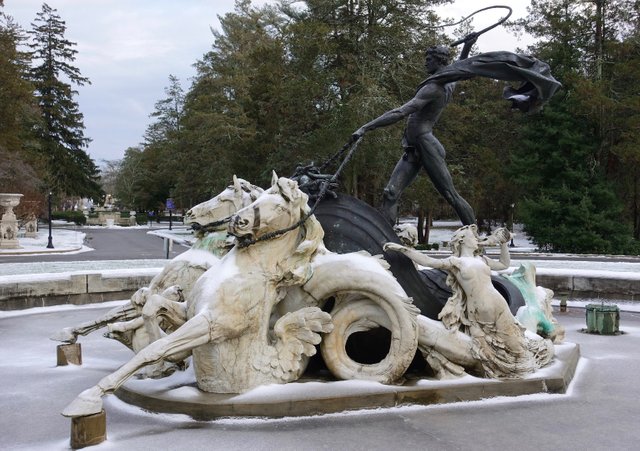
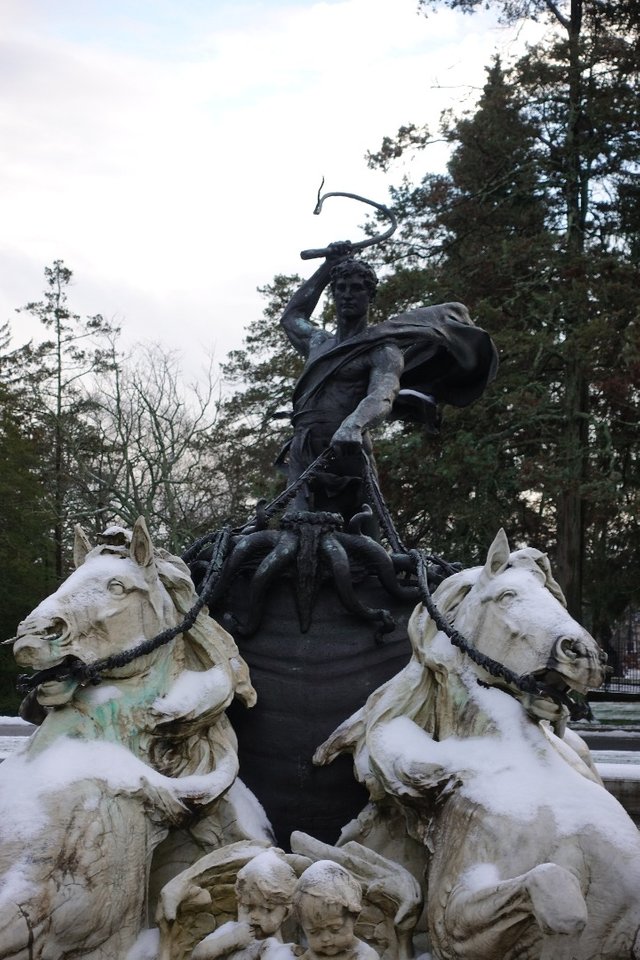
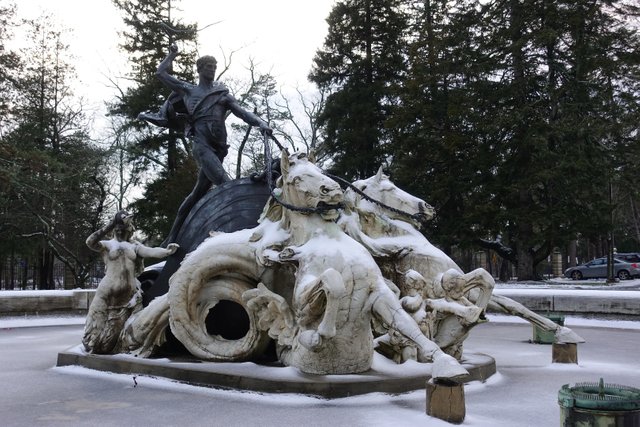
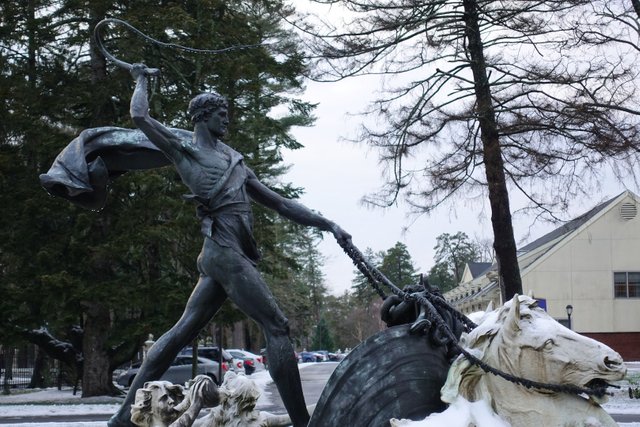
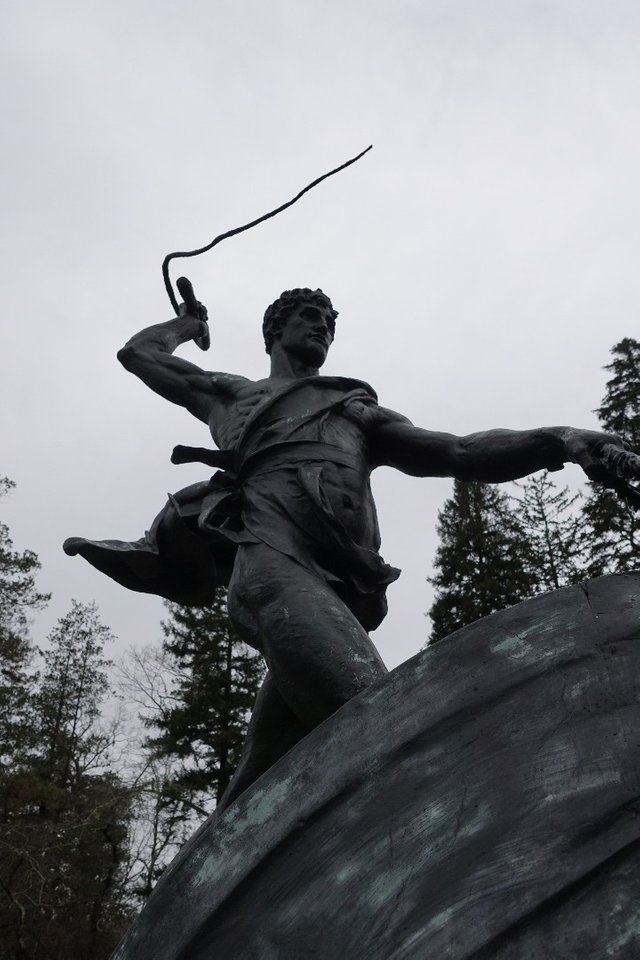
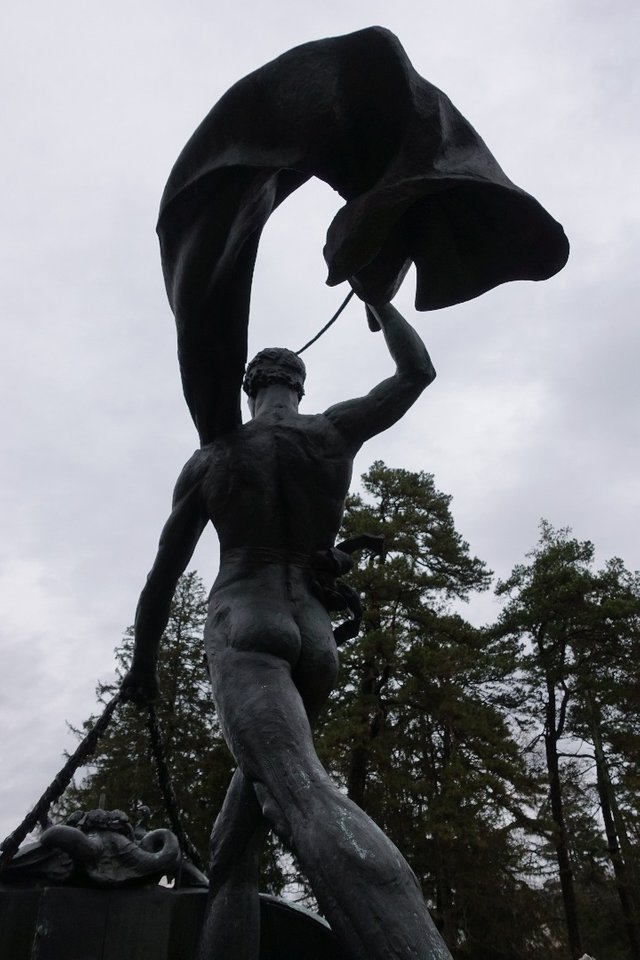
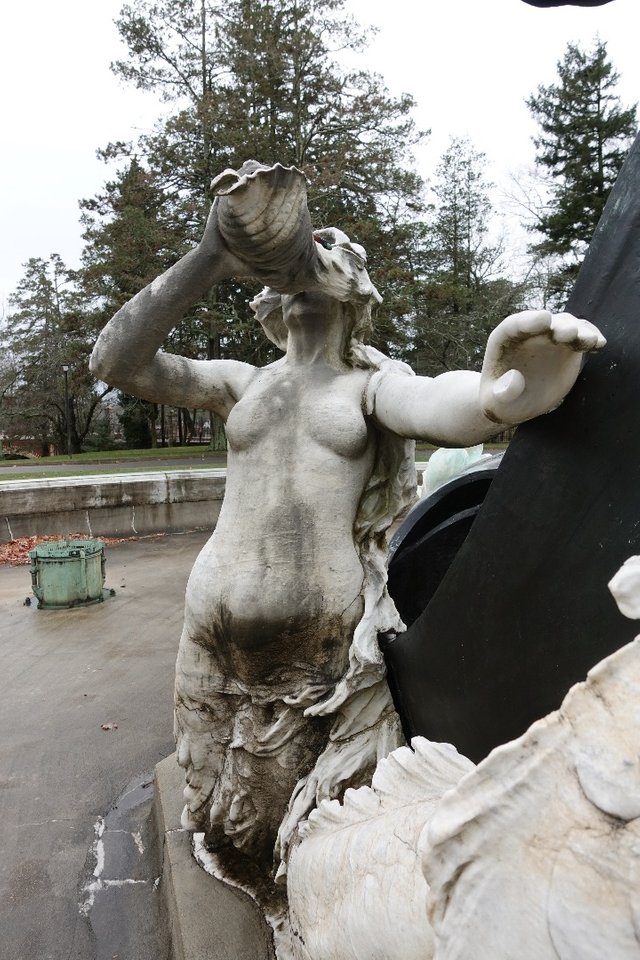
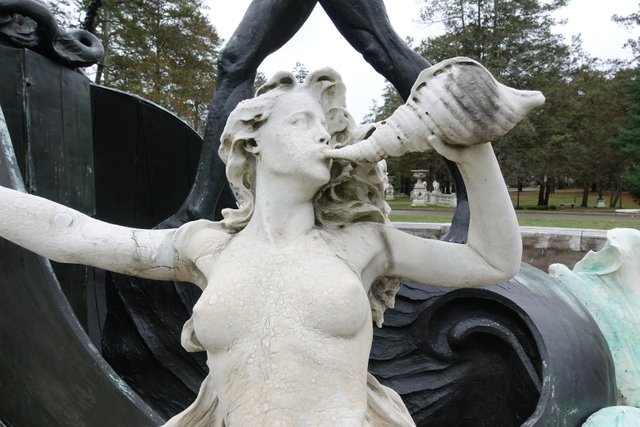
Notice the water jets in the horse's nostril.
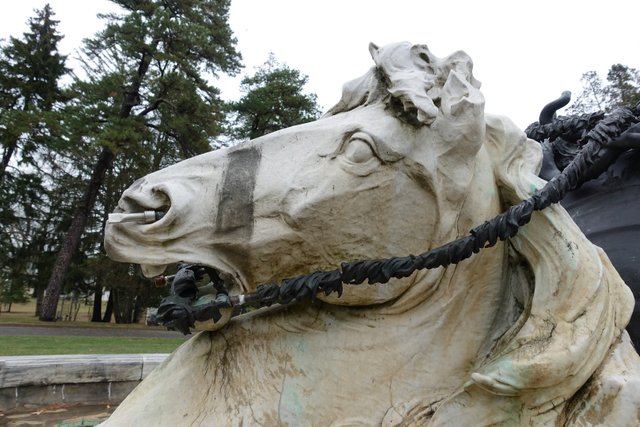
If I had that bit in my mouth I'd be a little aggitated too!
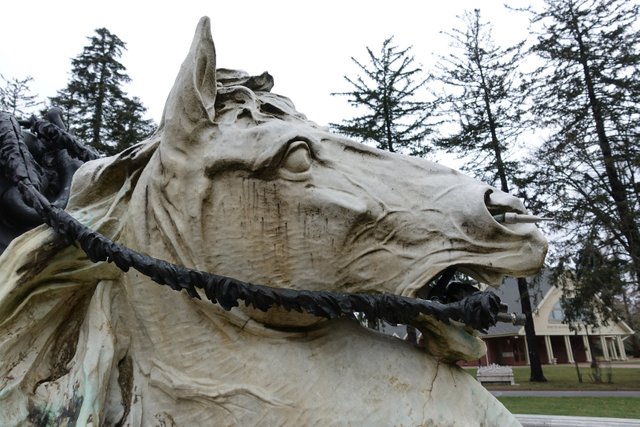
I like the hoof rest!
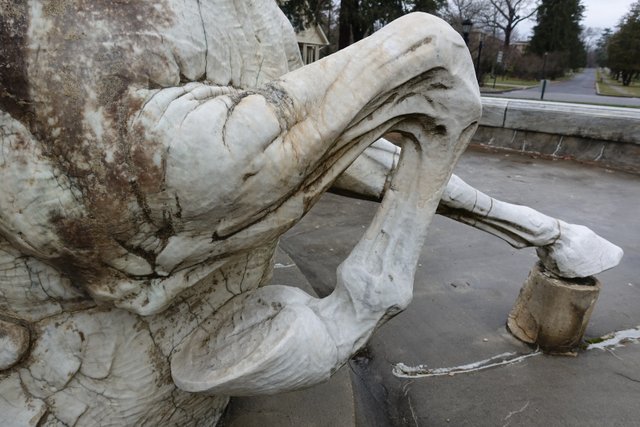
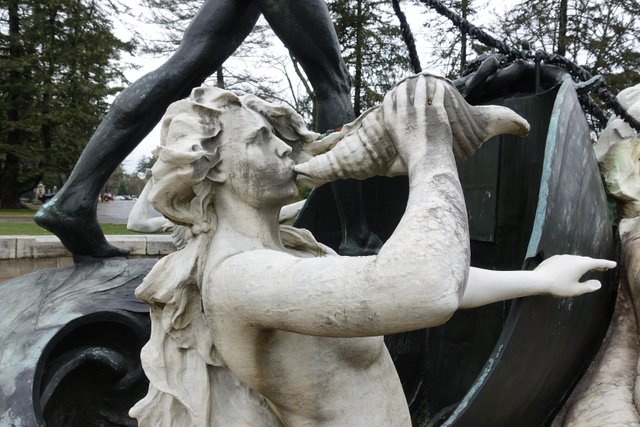
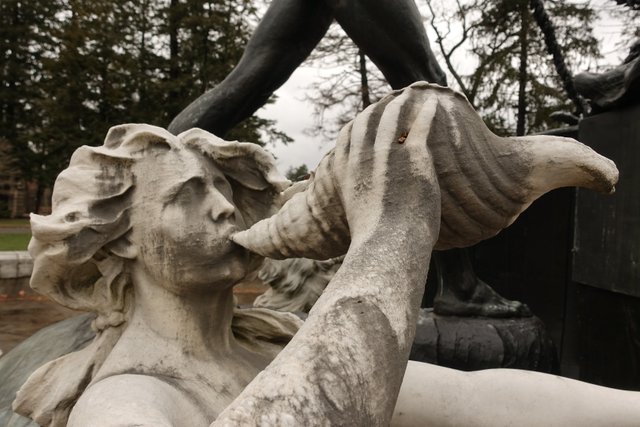
I wonder if they ever pressure-wash the marble, or if that would dramatically accellerate the statue's demise?
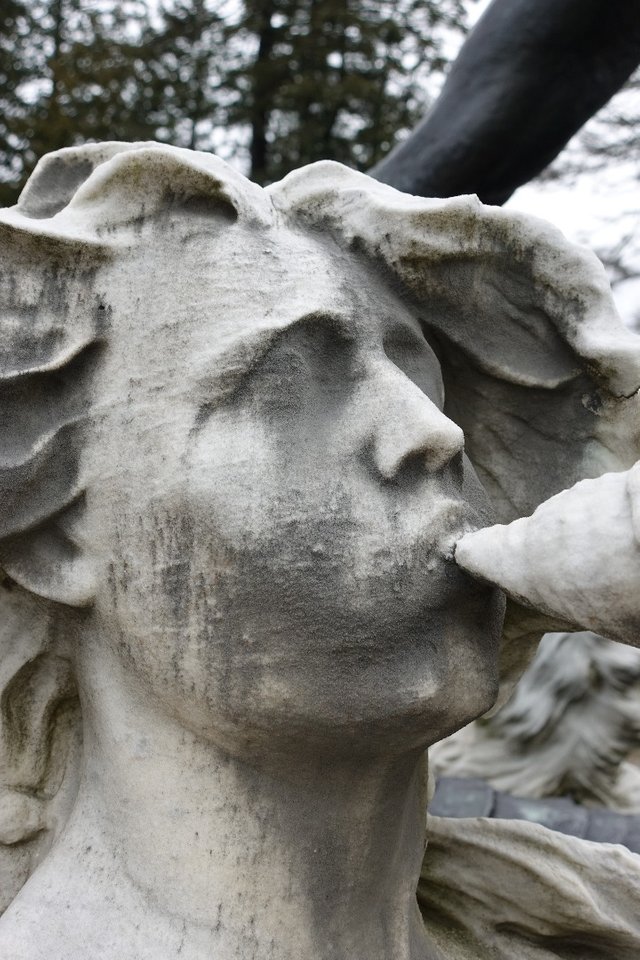
All images, except the old postcard, @cognoscere and taken at Georgian Court University in Lakewood, New Jersey on 12/17/2016 (with snow) and 12/18/2016 (without snow).
Sony RX100 V
You made Curie again!!! For some reason I am missing your posts on my wall.....it's happened with a few I usually follow.
did you wonder how that statue got erected? 2,000 pounds?? Do you think they put it up in pieces? Still....with the kind of equipment we have today...how'd they do it?